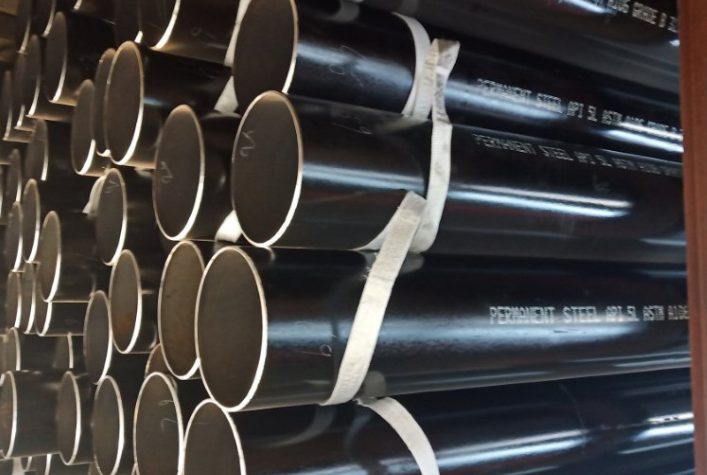Calculation Method of Seamless Steel Pipe Wall Thickness and Bearing Pressure
For carbon seamless steel pipes, if the outer diameter and wall thickness are known, it is required to calculate how much pressure it can withstand; or if the outer diameter and pressure are known, it is required to calculate its economical and applicable wall thickness. The above two situations are often encountered by our designers in our work. Here, we will provide you with the calculation formula:
(1) The calculation method of known seamless steel pipe outer diameter specifications and wall thickness to withstand pressure (the tensile strength of different steel pipes is different)
Pressure = (wall thickness * 2 * steel pipe material tensile strength) / (outer diameter * coefficient)
(2) The calculation method for calculating the wall thickness of the known seamless steel pipe outer diameter and pressure:
Wall thickness=(pressure*outer diameter*factor)/(2*tensile strength of steel pipe material)
(3) Expression method of steel pipe pressure coefficient:
c. Pressure P>17.5 coefficient S=4.
Suppose the tensile strength of the material is σ, the pressure is P, and the outer diameter of the tube is D; Where S is the safety factor; For example: How much pressure can the φ16*3 seamless steel pipe (20#steel) bear? φ16*3 seamless steel pipe can withstand pressure: φ 16*3 seamless steel pipe can withstand pressure: Real examples from our design: 1. For a project, the GL heater mixing pipe uses φ76*4 seamless steel pipe (20# steel): The pressure that the steel pipe can withstand Conclusion: φ76*4 seamless steel pipe can withstand the steam pressure of this project at 2.2MPa, so don’t worry. 2. For the same project mentioned above, φ18*2.5 seamless steel pipe is initially selected for the heat exchange tube of the GL heater, instead of the usual φ18*2 seamless steel pipe (20# steel). So, can the φ18*2 seamless steel pipe withstand the steam pressure of 2.2MPa? The pressure that the steel pipe can withstand
Therefore, the safety factor takes S=6 for the second time;
The pressure that the steel pipe can withstand
It can be seen that the φ18*2 seamless steel pipe can bear pressure of 15.2MPa, and the steam pressure in this project is 2.2MPa. For this working condition, φ18*2.5 does not have to be used (the wall thickness is increased, the pressure bearing capacity will be higher).
As a carbon steel pipe manufacturer, Wilson Pipeline Manufacturing Co.,Ltd specializes in the production and supply of seamless steel pipes, welded steel pipes, hollow sections, stainless steel pipes, pipe fittings, etc., with more than ten years of production experience. (Fluid pipe/Boiler pipe/Fire pipe/Line pipe/Structural pipe)
a. Pressure P<7Mpa coefficient S=8;
b. 7
Pipe wall thickness δ= (P*D)/(2*σ/S)
Pressure P is less than 7MPa, S=8; P is between 7 and 17.5MPa, S=6; P is greater than 17.5MPa, S=4;
Our first step is to choose the safety factor S=6; choose 20# steel with a tensile strength of 410MPa;
P= (2*σ/S*δ)/D
=(2*410/6*3)/16
=25.6MPa
——–
This value> 17.5MPa
Therefore, the safety factor takes S=4 for the second time
P= (2*σ/S*δ) /D
=(2*410/4*3)/16
=38.4MPa
Our first step is to choose the safety factor S=6; choose 20# steel with a tensile strength of 410MPa;
P= (2*σ/S*8) /D
=(2*410/6*4)/76
=7.2MPa (this value is between 7~17.5MPa)
Our first step is to choose the safety factor S=8; choose 20# steel with a tensile strength of 410MPa;
P= (2*σ/S*δ)/D
=(2*410/8*2)/18
=11.4MPa
——- This value> 7MPa
P= (2*σ/S*8) /D
=(2*410/6*2)/18
=15.2MPa